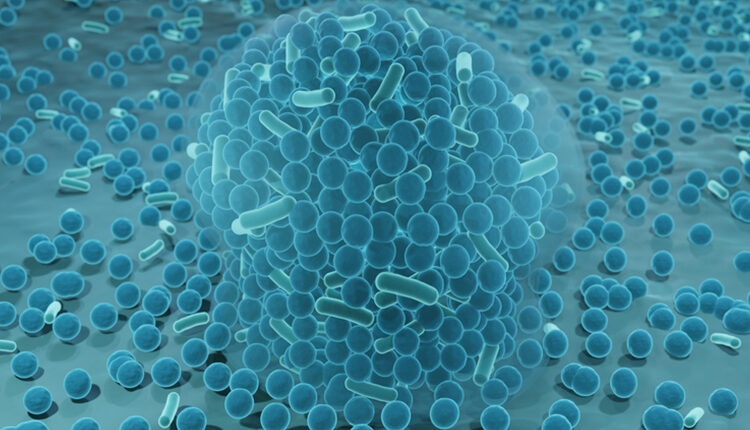 Artur Plawgo / iStock / Getty Images Plus
Artur Plawgo / iStock / Getty Images Plus
Collaborative Approach Takes Aim at Biofilm Formation on Implants
Oral health professionals are familiar with the challenges posed by biofilm formation on dentition in the form of plaque. However, it can also spell disaster for dental implants and other kinds of medical devices.
Biofilm can form anywhere that offers moisture, nutrients, and a surface. It’s basically a community of microorganisms, including bacteria and fungi, that stick together on a surface in a self-generated matrix of proteins, sugars, and nucleic acids.
Unfortunately, biofilm can grow on structures throughout the human body, including implant surfaces. This can be a problem when biofilm contains pathogens, in which case, infections can ensue, causing implants to fail.
Recently researchers from Binghamton University State University of New York, New Jersey’s Stevens Institute of Technology, New York’s Syracuse University, and City College of New York have begun employing a full-court press approach, working collaboratively, as part of the Approaching Zero Roadmap Initiative, to find a solution to the problem of implant surface biofilm growth.1
“We have to realize that certain problems cannot be solved within one discipline alone,” says Karin Sauer, PhD, a professor of biological sciences at Binghamton University State University. And they have their work cut out for them.
HARD-TO-REACH PLACES
While plaque on dental surfaces can be controlled with good oral hygiene, devices, such as dental implants and other artificial surfaces within the body, are inaccessible. Further, in natural tissue structures, harmful bacteria may be expelled through coping mechanisms such as the sloughing off of organic tissue. But implants are not organic and affected surfaces do not slough off.
To make matters worse, because they are long-lived, biofilm bacteria have plenty of opportunity to mutate. This can make them resistant to antibiotics, resulting in infections that are difficult to eradicate. And such infections are reportedly not uncommon.
Regarding antibiotic treatment, Sauer notes, “Because biofilms are so tolerant of antimicrobial agents, you may be killing off some of the biofilm bacteria but never all of them. Then, they just regrow as soon as you stop taking antibiotics.”
PREVENTION IS NOT ENOUGH
Of course, striving to prevent contamination is key. But the researchers explain that prevention isn’t just a matter of sterilizing equipment. They note that although medical devices are typically sterile when they arrive in the operating room, the ambient air is not.
In addition, heightened infection risks are associated with lengthy operations and dental implant procedures, which occur in the oral cavity—an area with a high-bacterial load.
FORWARD-THINKING STRATEGIES
As one avenue in combatting dangerous biofilm formation, Sauer and her team have been awarded a National Science Foundation Growing Convergence Research grant for engineering human tissue to create infection-resistant scaffolds that can be reabsorbed by the body.
Researchers at Stevens are working on medical device surface designs, while those at Syracuse are utilizing computer modeling to predict how surfaces will behave. City College will tackle the applicability in healthcare.
Virtual seminars focused on eliminating medical device-associated infections are also in the offing. In fact, the participating universities have been offering shared seminars the past 3 years on biomedical device infections. They plan to offer it again in spring 2023.
Sauer explains that the plan is for the four universities to exchange students and ideas, and to train students to think outside their disciplines. Says Sauer, “We need to combine more than one discipline to solve this problem.”

